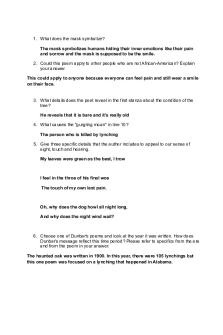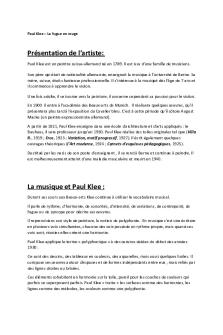Paul Keating Speech Notes PDF

| Title | Paul Keating Speech Notes |
|---|---|
| Course | English: Advanced English |
| Institution | Higher School Certificate (New South Wales) |
| Pages | 1 |
| File Size | 40.6 KB |
| File Type | |
| Total Downloads | 34 |
| Total Views | 148 |
Summary
Band 6 for English ...
Description
Paul Keating - Redfern Speech Paul Keating’s speech advocates for the re-evaluation of the relationship between Indigenous and white Australians during the International Year of the Worlds Indigenous People. As the Labour Prime Minister of a government with a history of activism for Aboriginal rights, Keating’s credibility was well established and the speech a timely reminder of the High Court’s Mabo decision on Native Title which was a pivotal turning point in Aboriginal history. Keating challenges his audience with the confronting idea that, even after Mabo and the recognition of Aboriginal political rights through the 1967 referendum and the Tent Embassy under the Whitlam government, inequity is still a major concern. He asserts this with powerful emotive rhetoric, using anaphora, ‘we took, we brought’ we committed, we failed’ and violent imagery ‘smashed the traditional way of life’ to reinforce the notion that Aboriginal Australia has been unjustly treated. He cites statistics regarding the Royal Commission report on the number of deaths in custody as showing ‘with devastating clarity that the past lives on in inequality, racism and injustice.’ The derogatory epithets and accusatory tone insinuates that Australian’s are ‘burdened’ due to past atrocities that ultimately ‘degraded all of us’ are highly effective in engendering a sense of guilt or outrage in his audience of both indigenous and white Australians. The speech also places emphasis on the need for equality and opportunity within the Australian community. Keating demands the audience to address the impact of the English invasion on the Indigenous community, and the introduction of concepts such as assimilation, and selfdetermination. This is also seen through the polysyndeton “...or to lose...or the extension of social justice”. This reveals that the enduring value of the speech remains highly significant to both Indigenous and white Australians due to the criticism of the past injustices that stained the identity of many Australians. This enables the audience to re-evaluate factors such as Australia’s national identity and the need to embrace the Aboriginal’s as valued and significant members of society. In rejecting the complacency of white Australia, he demands that the audience re-evaluate its national identity and to embrace Aboriginals as people who are there in the Australian legend and who ‘helped build this nation.’ The pathos of his speech is evident in these emotionally charged assertions and further highlighted in his appeals to the audiences ‘identity’ and ‘humanity’ when he states the need to bring the aboriginals out of the metaphorical ‘shadows’ and to recognise they are part of us and intrinsic to our own ‘deeply held values’. Keating employs the inclusive ‘we’ throughout his speech to garner empathy from his audience and align himself with the average citizen who may feel the unsettling guilt of past wrongs. His rhetorical question ‘how would I feel if this was done to me?’ brings home to us all the need for a deeper engagement with the ‘hearts and minds’ of Australia's First Nations, further persuading his audience to accept his call to action. Despite the repetition of terrible injustices, Keating ends his speech on a note of hope. By delivering his presentation in Redfern, which he suggests ‘is a good place to contemplate these things’ he deliberately ensures that he reaches the heart of his Sydney audience where both whites and aboriginals congregate. His final imperative ‘confident’ and ‘succeed’ suggest a future of greater equality and harmony and provide his then audience with a glimmer of optimism and today's audience with a reminder that there is still far to go in our quest for true justice and equity....
Similar Free PDFs

Paul Keating Speech Notes
- 1 Pages

Presentation Notes - Paul Bagdan
- 2 Pages

Speech notes
- 2 Pages

Paul Laurence Dunbar - paul
- 1 Pages

Speech notes 8 24
- 2 Pages

Persuasive-Speech - Notes
- 5 Pages

Speech 1A Notes
- 25 Pages

Parts of speech notes
- 4 Pages

Informative speech notes
- 4 Pages

PAUL Poiret
- 4 Pages

Text Book Notes for Paul Blaer
- 14 Pages

Paul Klee - essaie sur Paul Klee
- 2 Pages
Popular Institutions
- Tinajero National High School - Annex
- Politeknik Caltex Riau
- Yokohama City University
- SGT University
- University of Al-Qadisiyah
- Divine Word College of Vigan
- Techniek College Rotterdam
- Universidade de Santiago
- Universiti Teknologi MARA Cawangan Johor Kampus Pasir Gudang
- Poltekkes Kemenkes Yogyakarta
- Baguio City National High School
- Colegio san marcos
- preparatoria uno
- Centro de Bachillerato Tecnológico Industrial y de Servicios No. 107
- Dalian Maritime University
- Quang Trung Secondary School
- Colegio Tecnológico en Informática
- Corporación Regional de Educación Superior
- Grupo CEDVA
- Dar Al Uloom University
- Centro de Estudios Preuniversitarios de la Universidad Nacional de Ingeniería
- 上智大学
- Aakash International School, Nuna Majara
- San Felipe Neri Catholic School
- Kang Chiao International School - New Taipei City
- Misamis Occidental National High School
- Institución Educativa Escuela Normal Juan Ladrilleros
- Kolehiyo ng Pantukan
- Batanes State College
- Instituto Continental
- Sekolah Menengah Kejuruan Kesehatan Kaltara (Tarakan)
- Colegio de La Inmaculada Concepcion - Cebu



